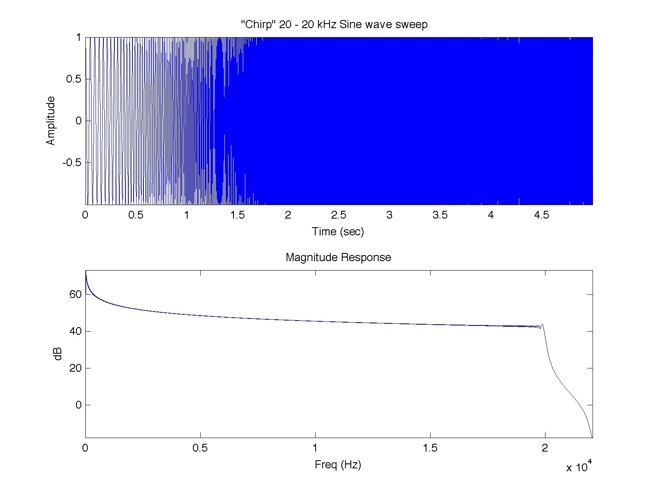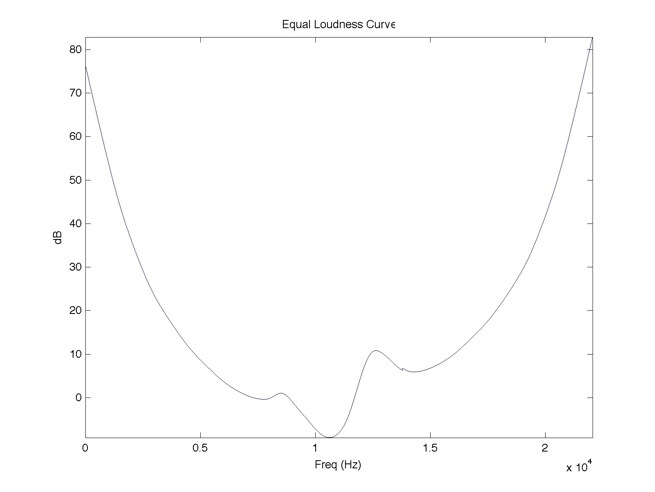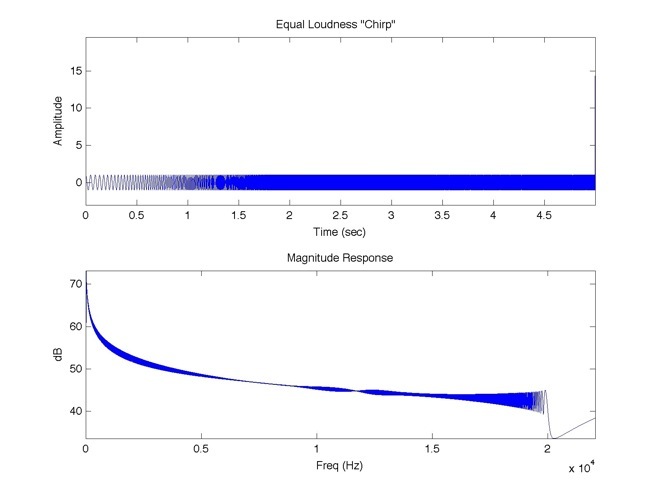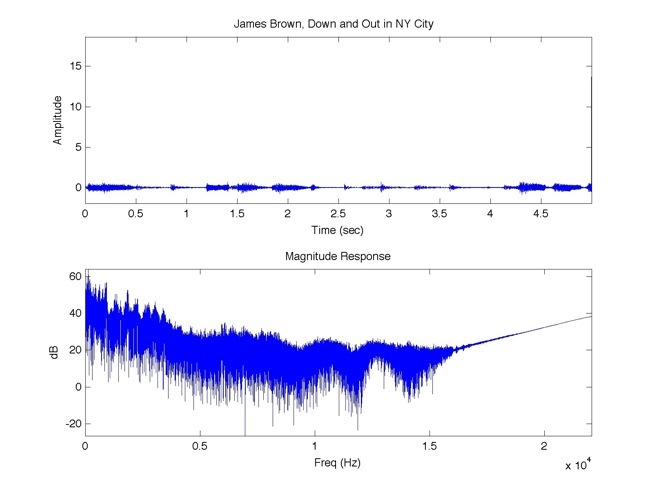Section 2
In this part you will experiment with equal loudness ideas.
a. Generate a 5 sec chirp consisting of a tone swept from 20 Hz to 20 kHz at constant rate and constant amplitude. Assume an SPL of 20 to 50 dB.
b. Plot the envelope required to maintain constant loudness level for this chirp.
c. Generate the equal loudness version of this chirp.
d. Create an equal loudness version of some broadband audio.
__________________________________________________________________________
Click Here to view MATLAB code.
Part a.
Figure 2.1: I created the chirp with the MATLAB chirp function.
Part b.
Figure 2.2:
For the equal loudness curve, I used a function called iso226 that produces 29 points from the Fletcher Munson Curves when given the desired dB for 1 kHz. The 29th point corresponds to 12.5 kHz. I assumed that the band 12.5 - 20 kHz would have similar response as the band 0 - 7500 Hz. So I took the section 0 - 7500 dB from the equal loudness curve, mirrored it, added an offset to aline it, and then concatenated it onto the end of the original equal loudness curve. To make the chirp have equal loudness (Figure 2.3), I added its frequency domain representation, found by taking the fft, with the curve mentioned above.
Part c.
Figure 2.3: The Equal Loudness driven chirp.
Part d.
Figure 2.4: The original version.
In part d, I used 5 seconds from the James Brown song, Down and Out in New York for my broadband audio. I created it with the exact same code from part c.
Figure 2.5: The Equal Loudness version.




